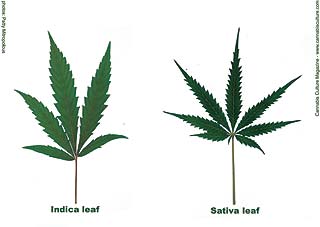@Jenny..........Be patient..... and dont chop or give up. This strain is easily a 14-16 week strain. It originated in an area only a few degrees above the equator. Once flower initiates and you are able to stay the course, you will be rewarded depending on who's cut it is and how much of the original gene pool is till left, you will have one of the best sativa stones out there. Not for the faint of heart or those prone to paranoia or have heart issues. Very racy, cerebral and some light visuals. Very much a headstash smoke and not a cut you would keep for cash cropping.
Here is some information that may assit you when dealing with equatorial strains. Again patience is the hardest part.
Hope this helps.
Inducing Sativa
After many years of first-hand experience breeding herb indoors as well as outdoors, I am of the opinion that the two most influential factors involving phenotypic variation and expression among current indoor herb breeding projects are the photoperiod (hours of light per day) and the angle of light in relationship to the growing plant.
Specifically, I find the single most powerful influence to the Indica dominant phenotype is the traditional 18/6 veggie cycle and 12/12 flowering cycle. The 18/6 veggie and 12/12 flower cycle is an attempt, however poor, to mimic the Indica-producing photoperiod. It is my belief that this light cycle strongly influences for Indica phenotypic expression.
Sativa phenotype characteristics will manifest under a more equatorial photoperiod, closer to a 13/11 veggie cycle and an 11/13 flower cycle. This is the light timing range to use to elicit more Sativa dominant expression from your plants.
As for the exact photoperiod formula that I incorporate into my growing/breeding regime, this will presently remain a trade secret. My advice is to experiment with different photoperiods, keep good notes and pay attention. Avoid the 18/6 and 12/12 photoperiods, while tweaking the times a bit differently with each breeding cycle until more desirable results in the finished product and their offspring are noted. Here's a hint: work in half-hour increments or a little less, and good luck!
Indica and Sativa characteristics.Angle of Light
Angle of light simply refers to the physical angle of light source the plant is dependent upon for growth. Perhaps the greatest difference between indoor and outdoor environments has to do with the angle of light received by the plant. This is also one of the greatest seasonal differences between the Sativa and Indica producing regions.
Outdoors, the main light source is the Sun, with minor influence coming from nearby reflective surfaces. As a plant grows taller and broader outdoors, that angle of light from the sun changes very little in relationship to the growing plant.
Seasonal changes in angle of light increase the further away from the equator one gets. At the equator there is the least amount of seasonal change in angle of light, only about 20?, whereas at the 45th parallel that change is as great as 45?. At the 45th latitude, the Summer Sun is high in the sky while during early Spring and late Fall the sunlight comes from much lower in the sky. The farther one goes from the equator, the greater the difference in seasonal changes regarding angle of light.
Indoors, the lights typically range from a few inches to several feet from the plant. As the plant grows taller, its physical relationship to the bulb's angle of light changes considerably. Most indoor grow rooms have relatively low ceilings, therefore, raising the bulbs may maintain a similar angle of light early on, but eventually the angle changes. The same differences may be noted among plants directly below the bulb and the plants off to the side of the room farther away from the bulb.
Circular light shuttles tend to emulate the arctic summer and create a confusing signal completely unknown to the equatorial Sativa. Straight-track overhead light shuttles are more conducive to inducing the Sativa phenotype.






